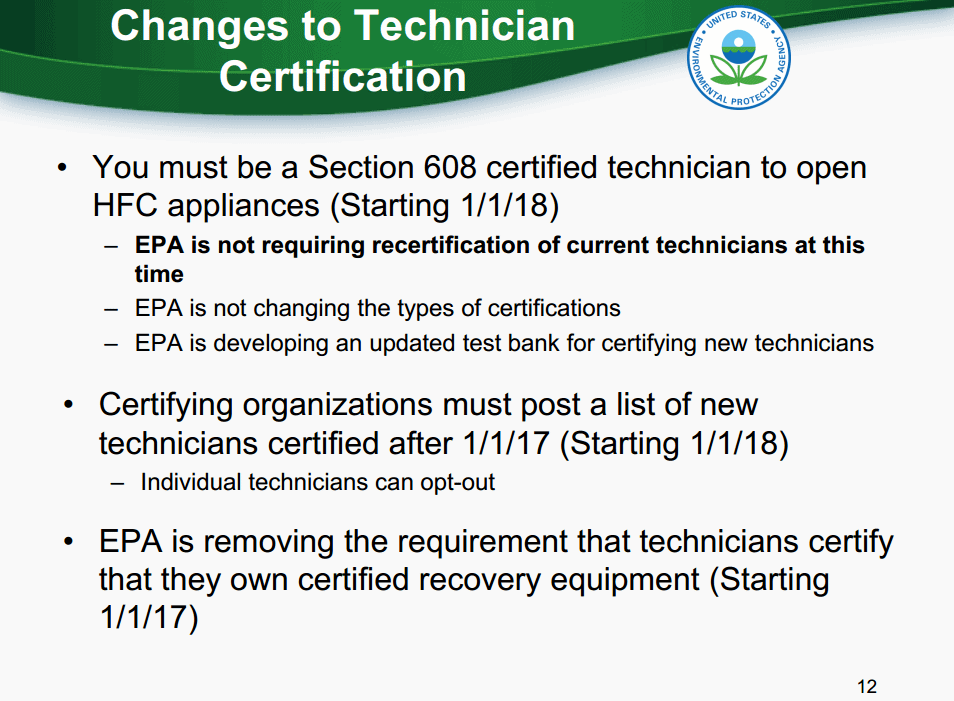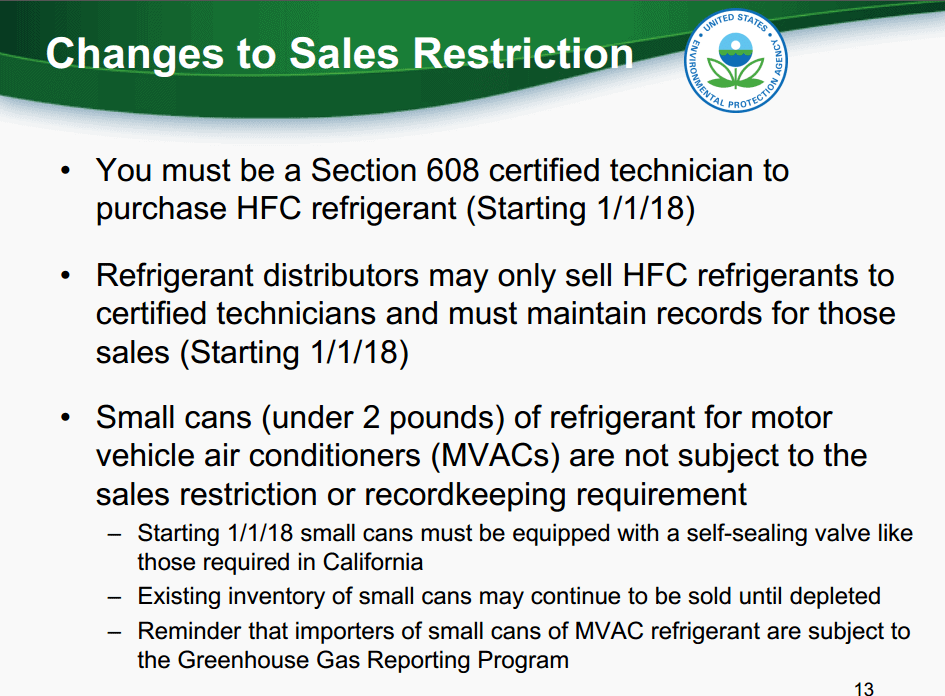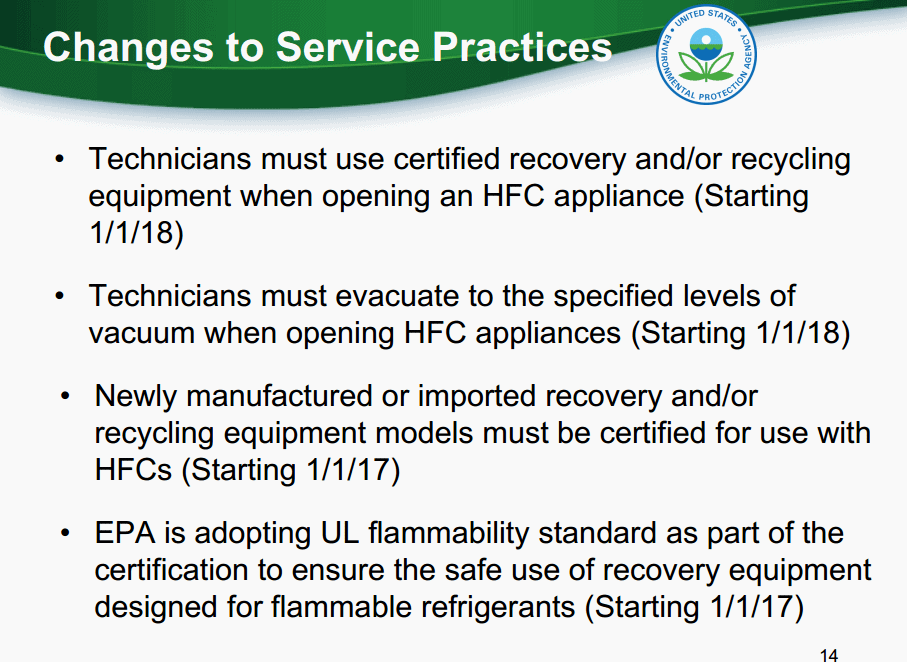Well folks I can’t say that I didn’t see this coming. I think most everyone did. On November 2nd, 2016 the EPA announced many changes on their certification program, who can buy refrigerants, and who can handle refrigerants. Not a lot of people knew that today as I write this you actually do not need to be 608 certified to purchase or handle R-410A, R-404A, or other HFC refrigerants. (134a is an exception if it’s over a certain poundage.)
Any bloke off the street could buy himself a container of 410A and try to recharge his own air conditioning unit and in the process vent half of the container into the atmosphere. As you all know the restrictions already existed on CFC and HCFC refrigerants such as R-12, R-22, and R-502 but now the EPA has made the decision to push these same restrictions over to HFC refrigerants.
The new regulations are set to go into affect on January 1st, 2018. Further on in this post I will provide screenshots of the EPA’s PowerPoint presentation showing exactly what changes they will be making. You can also go directly to the EPA’s presentation on their website. All credit for images and screenshots goes to the Environmental Protection Agency.
Why HFCs?
HFCs have been on the EPA’s list for many years now and in fact just a week before their announcement it was announced that the governments of the world would be adding an amendment to the Montreal Protocol called the Kigali Agreement. (Named after the city they met in Kigalo, Rwanda.) This agreement states that all countries will discontinue use of HFCs by the year 2100. While that may seem like a ways away it is worth mentioning that the developed countries such as the United States will begin phasing out HFCs as early as 2019. (R-404A is the first to go, than R-134a in 2020.) I wrote a separate article on the Kigali agreement earlier.
Unlike the CFCs and HCFC refrigerants in the past HFCs do not contain Chlorine. In fact the problem this time has nothing to do with the O-Zone layer. This time the problem is greenhouse gases that are put into atmosphere when a system is leaking or the refrigerant is vented. HFC refrigerants produce an extremely potent greenhouse gas. If you compared the Global Warming Potential of R-134a to Carbon Dioxide you would find that 134a is 1,300 times stronger than that of Carbon Dioxide. Think about that for a moment. 1,400 times stronger. It is extremely significant.
Alright, so now that we have covered the why let’s look at the actual changes:
Changes to Technician Certification
I won’t get into too many details here as the slide pretty much covers everything. Take a look through the changes. I’m sure most of them you are already used to anyways.

Changes to Sales Restrictions
This one is a little bit different and will affect the distribution side of things more. You will now have to provide your 608 certification in order to purchase any cylinders of HFC refrigerant. The only wiggle room here is if you buy a container that contains less than two pounds of refrigerant. The only application I could see this even working for is the automotive side with the R-134a cans. I’m not aware of them making 410A or 404A cylinders that small, but I may be mistaken. Please review the screenshot below provided by the EPA:

Changes to Service Practices
After reading this slide I assumed that this was common practice already. Maybe I’m wrong here but I would assume most of you would recover the refrigerant rather it’s HCFC or HFC. I don’t see this making much changes at all.

Conclusion
As I said before I’m sure a lot of you guys saw this coming. The changes are pretty much predictable and there is just over a year for companies to adapt. Anyone who is working in the field is already 608 certified so there’s nothing to worry about on your side. If anything this should help put a stop to do-it-yourselfers buying their own cylinder and not knowing what the hell they are doing. Having the 608 requirement forces them to call a certified professional rather than stumbling through it themselves.